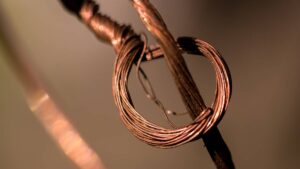BHP Results: BHP bullish on China as it hits iron ore record

Pic: Tim Macpherson/Stone via getty images
- BHP boasted a record first half at its Pilbara iron ore operations
- But it expects half year costs to come in above guidance, higher for the full year at its east coast coal mines
- CEO Mike Henry remains bullish on China as it reopens from Covid
BHP (ASX:BHP) has maintained its bullish stance on China, predicting another year with steel production in excess of 1 billion tonnes as it rolls out a record half for its iron ore operations in the Pilbara.
But it has followed Rio Tinto (ASX:RIO) in revealing the inflationary pressures in the current economic environment, increasing its FY23 met coal cost guidance to US$100-105/t, up to a quarter above 2021 levels, and expecting iron ore unit costs above its US$18-19/t guidance range for the first half.
BHP produced 74.3Mt of iron ore in the Pilbara in the December quarter and a record 146.4Mt in the first half, outpacing its full year guidance of 278-290Mt.
Taking into account only BHP’s ownership stakes in its mines, that came to 65.8Mt and 129.7Mt, respectively, up 3% quarter on quarter, 1% year on year and 2% year on year for the half.
While costs are a concern across its operations globally, BHP says China will be a “stabilising force”, echoing comments CEO Mike Henry made at its AGM in November before China’s Covid reopening.
“BHP believes China will be a stabilising force when it comes to commodity demand in the 2023 calendar year, with OECD nations experiencing economic headwinds,” he said today.
“China’s pro-growth policies, including in the property sector, and an easing of COVID-19 restrictions are expected to support progressive improvement from the difficult economic conditions of the first half.
“China is expected to achieve its fifth straight year of over 1 billion tonnes of steel production.”
(We think it’ll be four years, but who’s splitting hairs?)
BHP saw production grow in the first half virtually across its whole portfolio except for nickel, energy coal and its Antamina copper mine.
Production was up 138% year on year in the December half at its Olympic Dam mine, ahead of the integration of OZ Minerals (ASX:OZL) and its nearby copper business following the announcement of a successful $9.6 billion cash takeover bid last year.
Price hit
BHP saw production lift 9% QoQ at its Mt Arthur thermal coal mine in New South Wales, though the December half was 24% lower to 5.5Mt after the impact of wet weather that will see an increase in costs to US$84-91/t.
Its BMA met coal operations on the other hand saw a 5% YoY rise for the half to 27.2Mt on a 100% basis, with 13.9Mt produced in the December quarter (up 4% QoQ), with BHP expecting to hit the low end of guidance.
Iron ore, met coal, and copper prices were all lower compared to FY22, down 24%, 23% and 16% respectively to US$85.46/t, US$268.73/t and US$3.49/lb, though nickel and thermal coal prices will provide some solace.
Thermal coal prices through the December half were an incredible 157% higher year on year and 63% higher on FY22 at US$354.30/t (and ironically weaker coking coal grades were the strongest relative performers in the BMA portfolio), while nickel prices lifted 24% year on year and 5% on FY22 to US$24,362/t.
At its BMA operations, where a three-year enterprise agreement was completed with workers its Goonyella Riverside, Peak Downs, Saraji and Blackwater mines in December, BHP is continuing its royalty row with the Queensland Government, saying it will not invest in the business due to the policy.
“The Queensland Government’s decision to raise coal royalties to the highest maximum rate in the world makes Queensland uncompetitive and puts investment and jobs at risk,” BHP said.
“We see strong long-term demand from global steelmakers for Queensland’s high quality metallurgical coal, however in the absence of government policy that is both competitive and predictable, we are unable to make significant new investments in Queensland.
“This increase to royalties will impact the local businesses, suppliers and communities in Central Queensland where we operate.”
Including its share of the JV Samarco in Brazil, BHP produced 132Mt of iron ore for the December half and 66.9Mt in the quarter.
Its copper guidance remains unchanged at 1.635-1.835Mt after producing 834,400t in the December half (up 12% YoY) and 424,300t in the December quarter (up 3% QoQ).
Costs at Escondida, the world’s largest copper mine, are expected to be at the upper end and production at the lower end of its 1.08-1.18Mt guidance range, with 510,700t produced in the December half (up 5% YoY) and 258,000t in the December quarter (up 2% QoQ).
Olympic Dam’s dramatically higher production (104,000t for the half) came due to the smelter maintenance conducted the year prior, with near record milling and concentrate smelting in the half and record gold production also achieved after “debottlenecking”.
BHP (ASX:BHP) share price today:

UNLOCK INSIGHTS
Discover the untold stories of emerging ASX stocks.
Daily news and expert analysis, it's free to subscribe.
By proceeding, you confirm you understand that we handle personal information in accordance with our Privacy Policy.








